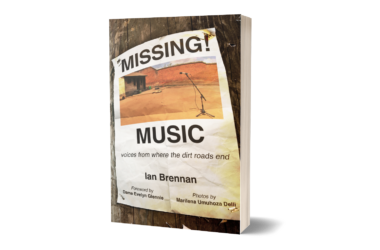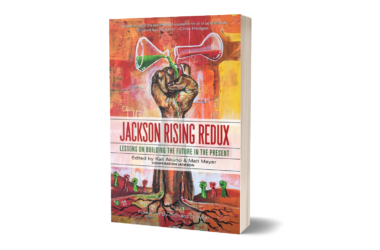by James Patrick Kelly
Asimov’s Magazine
worldbuilders
Part of the job description of a science fiction writer is to think creatively about the future. We focus the lens of extrapolation on whatever current trends catch our fancy and then guess what might come. But we are most comfortable writing about stuff we’re interested in and—maybe!—understand. This is why there are so many stories about future technologies and advances in science, since the domestic version of our genre sprang from DIY gadget magazines like The Electrical Experimenter <https://library.si.edu/digital-library/book/electrical-experimenter> which ran from 1913-1931. Editor and pulp pioneer Hugo Gernsback <sf-encyclopedia.com/entry/gernsback_hugo> used to slip his own clumsy “scientifiction” efforts into the pages of this and others of his tech publications before he founded Amazing Stories <en.wikipedia.org/wiki/Amazing_Stories> in 1926.
In the 1940s and ’50s, new writers expanded the purview of science fiction to include the social sciences. Indeed, our own Isaac Asimov <asimovonline.com/asimov_home_page.html> coined the term “social science fiction” in a 1953 essay to describe his own work exploring the effects that gizmos new technology might have on future societies. In the sixties and seventies social science fiction <bestsciencefictionbooks.com/social-science-fiction.php> was sometimes turned into a pejorative by traditionalists who dissed the radically speculative societies and techno-pessimism of a generation of literary humanists. A prickly debate continues to this day about the merits of hard versus soft SF. Both camps, however, believe worldbuilding to be an essential skill.
Would-be worldbuilders looking for advice will find plenty of resources on the net. Roll up your sleeves and click to the Big List of Worldbuilding Resources <kennethjorgensen.com/worldbuilding/resources> or NaNoWriMo World Building Resources <thewritersaurus.com/2015/10/19/nanowrimo-world-building-resources>. Followers of the hard SF school should consider buying Stephen L. Gillett’s World-Building <amazon.com/World-Building-Stephen-L-Gillett-ebook/dp/B014V4EDAI>, part of the excellent Science Fiction Writing Series edited by the late Ben Bova <benbova.com>. Just be prepared to design a setting of the fantastic complete with laws, culture, language, religion, as well as a biosphere, geology, geography, and climate. Oh, and you’ll be drawing maps <cartographersguild.com>.
Lots of maps.
shortcuts
As an aspiring writer, I often sought the advice of more accomplished worldbuilders. I remember puzzling through the astrophysics equations in Poul Anderson’s <sf-encyclopedia.com/entry/anderson_poul> essay “How To Build A Planet” in the 1976 S.F.W.A. Handbook. At the Clarion Writers Workshop <clarion.ucsd.edu> my fellow wannabes and I had our paper-thin future societies shredded by the sharpest minds in SF. Critics like Damon Knight <sf-encyclopedia.com/entry/knight_damon>, Tom Disch <sf-encyclopedia.com/entry/disch_thomas_m>, and Joanna Russ <newyorker.com/books/under-review/joanna-russ-the-science-fiction-writer-who-said-no> cut us no slack for a clever idea or a dynamic character if it was set against a wonky background or a future that was decades past its sell-by date. They would ask us hard questions like “How come everyone on your planet speaks the same language?” Or “Why aren’t the wizards in charge of your kingdom?” Or “Who packs a revolver on a starship?”
The SF writers’ challenge is not to get so bogged down in background that the plot never starts. That’s why we embrace certain genre shortcuts. If we send our Space Patrol captain to another star, we mutter something about the FTL drive <sciencefocus.com/news/faster-than-light-travel-is-warp-drive-really-possible> and flash the lights on the control deck to distract the reader. Don’t ask how our starship’s tractor beam <sciencemag.org/news/2018/01/watch-world-s-most-powerful-tractor-beam-levitate-its-biggest-catch> works or what generates the artificial gravity <phys.org/news/2019-07-artificial-gravity-free-science-fiction.html>, or how our crew keeps from getting their chromosomes scrambled by galactic cosmic radiation <en.wikipedia.org/wiki/Health_threat_from_cosmic_rays>. A delicate balance must be struck between honoring the niceties of worldbuilding and avoiding the momentum-killing monotony of infodumps <www.sf-encyclopedia.com/entry/infodump>.
Moreover, fashions in worldbuilding come and go. Writers are better these days at imagining diverse worlds, but are less interested in integrating cutting edge technology into our futures. As I read the pages of this fine publication, I detect a definite tilt toward the social sciences. I could churn out many columns listing powerful ‘Mov’s stories focused on psychology, sociology, anthropology, and political science. However, one of the most important social sciences rarely gets its due here—or anywhere else in the genre.
Alas, most SF writers don’t really get economics, the dismal science.
stars
Understanding economics requires a body of knowledge and a habit of thought that seems to be rare among us. Not only do we have to master the complexities of plot and character, metaphor, and subtext, but then we have to acquire at least a passing knowledge of astrophysics, planetary science, quantum mechanics, genetic engineering, and artificial intelligence while surfing the tsunami of technological breakthroughs announced every day on the 5.55 billion webpages of the world wide web. And let’s not forget all the other trending social sciences mentioned above. I think it takes a kind of magpie brain—shiny!—to write SF. At least, speaking for myself, I know a little about lots of stuff. But many of the economics shortcuts I commonly see make no sense.
Consider, for example, our two star franchises.
Gene Roddenberry <roddenberry.com>, in his worldbuilding wisdom, decreed a post-scarcity future for Star Trek <startrek.com>, doing away with money altogether. While the warp drive and transporter get all the attention, the foundational invention of this universe is the replicator <memory-alpha.fandom.com/wiki/Replicator>, a black box gizmo that uses pure energy to create matter in whatever configuration the writers need. Economic limits to action fall effortlessly away so the crews can flit around the galaxies having adventures. In 2016 French economist Manu Saadia <fusion.tv/author/manu-saadia> explored the economic implications of Roddenberry’s inspiration in Trekonomics: The Economics of Star Trek <amazon.com/Trekonomics-Economics-Star-Manu-Saadia/dp/1941758754>. He assigns the most unlikely Trek tech to the far, far future, but manages to find some lessons for our own time in its ideas about growth and governance.
Trek’s twenty-third century without money, where acquisition of material goods is frictionless, may be (to quote Spock) fascinating <youtube.com/watch?v=otOiFOTv7HE&ab_channel=MeTV>, but is it realistic? Even if we grant the rubber science, questions remain about how value is established. What motivates the labor force? Do the men and women who build the starships do so out of patriotism for the Federation? Who mines the dilithium crystals? Who teaches fourth grade? Who cleans the bathrooms? Okay, maybe bots take care of all that. Then what do the people do? If you didn’t need to work, how would you spend your life? For many of us (most?), the answer would be sports, arts, hobbies, and goofing off 24/7/365. This, by the way, is why present-day conservatives rebel at the mere suggestion of Guaranteed Basic Income <en.wikipedia.org/wiki/Universal_basic_income>, as discussed in a previous column. Ask yourself why we don’t see any of this implied Pursuit-of-Happiness-Society when Enterprise crews take shore leave? Meanwhile, for more Trek follies, consult Why Star Trek’s Future Without Money Is Bogus <brainknowsbetter.com/news/2013/4/17/why-star-treks-future-without-money-is-bogus> or 10 Hilarious Ways Star Trek’s Economy Makes No Sense <screenrant.com/star-trek-economy-plot-holes-funny>.
Both money and markets exist in George Lucas’s <biography.com/filmmaker/george-lucas> fanciful tale of doings A long time ago in a galaxy far, far away <www.starwars.com>, but it’s hard to draw conclusions about the Star Wars economy because of its continuing political chaos. However, economists point to the destruction of not one, but two, Death Stars as a problem. In It’s A Trap: Emperor Palpatine’s Poison Pill <researchgate.net/publication/285458924_It’s_a_Trap_Emperor_Palpatine’s_Poison_Pill>, economist Zachary Feinstein <web.stevens.edu/facultyprofile/?id=2357> used economic modelling and risk analysis to estimate the cost of the original Death Star. He judges it to be
$193 quintillion and asserts that destroying it would have caused a galactic depression that would have made our Great Depression a mere blip. And yet, in the midst of that economic chaos, an even bigger Death Star somehow got built and destroyed. This dual shock to the system would have led to the failure of the deregulated central Intergalactic Banking Clan <starwars.fandom.com/wiki/InterGalactic_Banking_Clan> and the domino collapse of the rest of the banking system, crippling the galactic economy beyond any chance of recovery in the time span suggested by the movies. While the climaxes of Star Wars: A New Hope and The Return of the Jedi look great cinematically, they make no sense economically. For more disconnects between spectacular imagery on the screen and economic worldbuilding, consider how the Star Wars screenwriters like to create set pieces against spectacularly ruined technological artifacts. The webpage In the ‘Star Wars’ Economy, One Thing Doesn’t Pay <https://www.bloomberg.com/opinion/articles/2019-12-22/in-the-star-wars-economy-one-thing-doesn-t-pay> points out that “Junkyards and scavengers are everywhere in the series. So why do they waste so much valuable scrap?”
exit
Lest you think that rubber economics is a phenomenon only of dramatic SF, reviewing fictional concepts of money proves otherwise. The dominant medium of exchange in Star Wars is the credit <starwars.fandom.com/wiki/Galactic_Credit_Standard>. But credits have been around in science fiction since Gernsback’s days. While American exceptionalist writers might project the dollar into their far futures, most of us realize that the future global reserve currency <investopedia.com/terms/r/reservecurrency.asp> won’t be greenbacks. Credit as the “dollar” of the future (or the yuan or the ruble) is one of those shortcuts that we writers are happy to take advantage of. See Why Does Nearly Everyone in Scifi Pay in Credits? <libertyislandmag.com/2019/06/21/why-does-nearly-everyone-in-scifi-pay-in-credits>. But what is credited by a credit? Often as not, the answer does not bear close scrutiny.
By the way, here’s my take on the origin story of SF’s credits shortcut. It’s from Edward Bellamy’s 1888 novel Looking Backward <gutenberg.org/ebooks/624>. “A credit corresponding to his share of the annual product of the nation is given to every citizen on the public books at the beginning of each year, and a credit card issued him with which he procures at the public storehouses, found in every community, whatever he desires whenever he desires it.”
Along with all the other innovations in this fast-forward age, a new kind of money that has recently appeared has the look and feel of science fiction: cryptocurrencies <investopedia.com/terms/c/cryptocurrency.asp>. I’ve been surprised by how little impact it has made on our genre. Perhaps this is because as John Oliver wryly observed <youtube.com/watch?v=g6iDZspbRMg&ab_channel=LastWeekTonight>, “it’s everything you don’t understand about money combined with everything you don’t understand about computers.” But the equally complicated (and revolutionary) CRISPR-Cas9 system <newscientist.com/term/what-is-crispr> didn’t start making effective human gene edits until 2015, and already there are stories exploring its implications. Bitcoin <online.stanford.edu/future-for-cryptocurrency> launched in 2009, and, while the dismal science may never be the same, SF writers, with the possible exception of ubergeek Neal Stephenson <nealstephenson.com>, have not been exactly enthusiastic.
I don’t know, maybe it’s above our pay grade.







